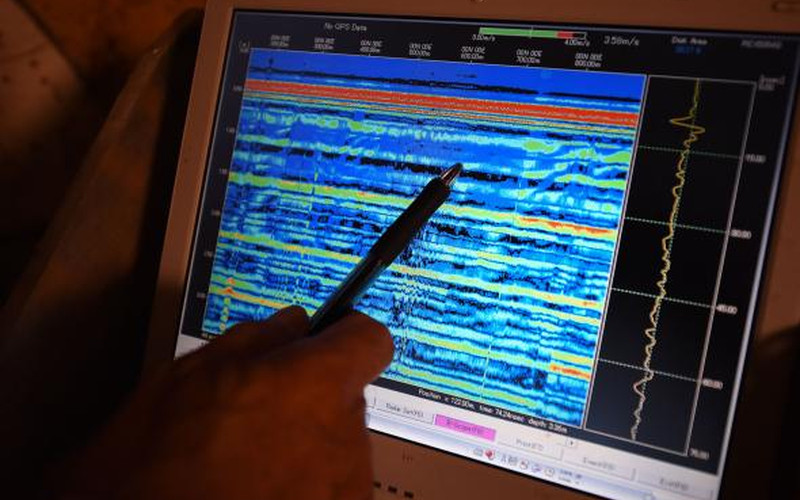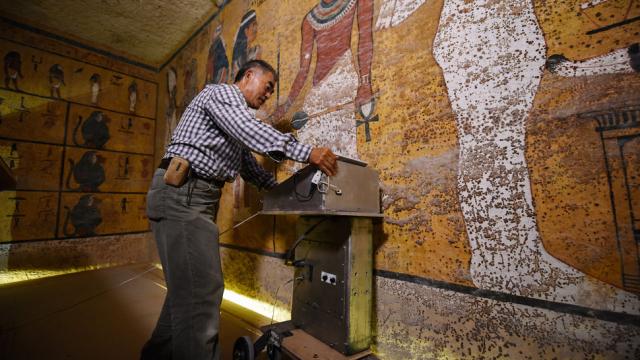Late last year, radar scans at King Tut’s tomb revealed the possible presence of a secret chamber. A more detailed analysis of this data shows not just the presence of a hidden room — but also unidentified objects that are comprised of metal and organic materials.
As reported in National Geographic, the announcement was made earlier today at a press conference in Cairo, where Egyptian antiquities minister Mamdouh Eldamaty said, “It could be the discovery of the century.”

Watanabe points to radar data used to determine the material structure of the walls. Image: Brandon Quilicci, National Geographic
Back in November 2015, Japanese radar specialist Hirokatsu Watanabe was brought in to scan the west and north walls of Tut’s burial chamber. At the time, the initial results were compelling, suggesting with “90 per cent” certainty that another chamber lay behind the north wall of the tomb.
Watanabe has now released his full report — and he believes there are objects made of metal and organic materials on the other side. The Egyptian minister refused to speculate about what those object might be.
Watanabe’s radar findings were reviewed by outside experts, including a strategic researcher who works at NASA’s Jet Propulsion Laboratory, and Remy Hiramoto, a specialist in semiconductors and microelectronics, who described the data set as “tight”.
“It validates the initial hypothesis that there is a non-natural occurring chamber or cavity on the other side of that wall,” Hiramoto told NatGeo. “Based on the signatures that are in the data, there’s a void, and there’s definitely something that’s within the void. There’s something in there.”
Archaeological geophysicist Jason Herrmann told NatGeo that it’s relatively easy to use radar to determine details about unseen materials, noting that he’s used the technique to find metal artefacts buried within sand dunes in the United Arab Emirates. Moreover, he said that detecting metal objects in a room should be easier than detecting it in sand.
Interest in Tutankhamun’s 3340-year-old tomb was rekindled by British archaeologist Nicholas Reeves, who believes there may be another tomb hidden behind the walls. Although initially rejected by many Egyptologists, his theory was based on physical evidence at the site indicating that traces of passageways and door openings had been plastered and painted over during the preparation of Tut’s chamber. Reeves speculates that a hidden chamber contains the remains, and possibly intact grave goods, of Queen Nefertiti, the wife of the “heretic” monotheistic Pharaoh Akhenaten, King Tut’s father.
A team of specialists from National Geographic will perform their own radar tests later this month. One of the main goals of the new scan will be to determine the thickness of the walls. Eldamaty refused to say what will happen after that: “We have to wait.”
Top image: Radar specialist Hirokatsu Watanabe using his specially modified Koden-brand radar scanning machine. Image: Brandon Quilicci, National Geographic
